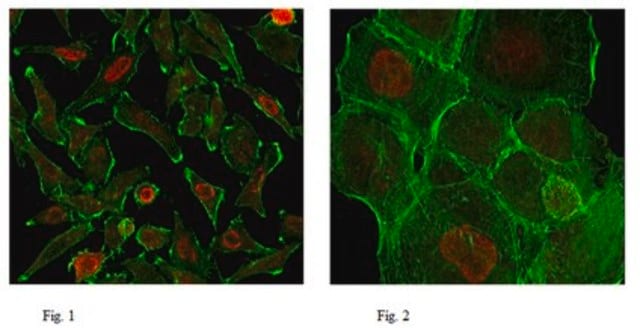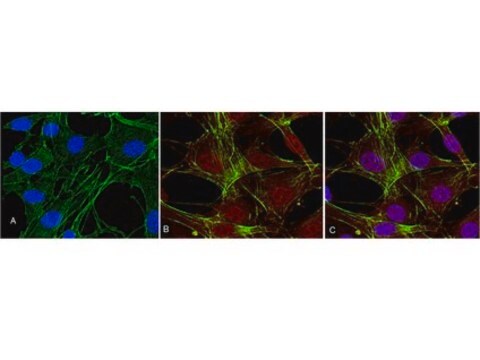05-952-I
Anti-RNA Polymerase II Antibody, CTD Antibody, clone 8WG16
clone 8WG16, from mouse
Sinónimos:
DNA-directed RNA polymerase II subunit RPB1, EC: 2.7.7.6, RNA polymerase II subunit B1, DNA-directed RNA polymerase II subunit A, DNA-directed RNA polymerase III largest subunit, RNA-directed RNA polymerase II subunit RPB1
About This Item
Productos recomendados
biological source
mouse
antibody form
purified immunoglobulin
antibody product type
primary antibodies
clone
8WG16, monoclonal
species reactivity
yeast, human
packaging
antibody small pack of 25 μg
technique(s)
dot blot: suitable
immunoprecipitation (IP): suitable
inhibition assay: suitable
western blot: suitable
isotype
IgG2aκ
NCBI accession no.
UniProt accession no.
target post-translational modification
unmodified
Gene Information
human ... POLR2A(5430)
General description
Specificity
Immunogen
Application
Epigenetics & Nuclear Function
Dot Blot Analysis: A representative lot detected RNA Polymerase II, CTD in Dot Blot applications (Thompson, N.E., et. al. (1989). J Biol Chem. 264(19):11511-20).
Immunoprecipitation Analysis: A representative immunoprecipitated RNA Polymerase II, CTD in Immunoprecipitation applications (Bhaumik, S.R., et. al. (2001). Genes Dev. 15(15):1935-45).
Inhibition Analysis: A representative lot inhibited the interaction of RNA Polymerase II, CTD with the transcription complex. (Thompson, N.E., et. al. (1989). J Biol Chem. 264(19):11511-20).
Quality
Western Blotting Analysis: 1 µg/mL of this antibody detected RNA Polymerase II, CTD in HeLa cell nuclear extract.
Target description
Physical form
Storage and Stability
Other Notes
Disclaimer
¿No encuentra el producto adecuado?
Pruebe nuestro Herramienta de selección de productos.
Certificados de análisis (COA)
Busque Certificados de análisis (COA) introduciendo el número de lote del producto. Los números de lote se encuentran en la etiqueta del producto después de las palabras «Lot» o «Batch»
¿Ya tiene este producto?
Encuentre la documentación para los productos que ha comprado recientemente en la Biblioteca de documentos.
Nuestro equipo de científicos tiene experiencia en todas las áreas de investigación: Ciencias de la vida, Ciencia de los materiales, Síntesis química, Cromatografía, Analítica y muchas otras.
Póngase en contacto con el Servicio técnico








